At one time, carbon dioxide emissions were invisible — not just physically, but economically. But times have certainly changed. The effects of emissions are all too clear — the subject of global movements, of international agreements and a flurry of net-zero commitments from the world’s largest businesses. And in the last decade, the effects of carbon trading have been noticed too. Carbon trading or emissions trading schemes (ETS) are a way to measure and account for the cost of emissions. Their trade is a way to strengthen companies’ emissions reduction strategies by investing in carbon reduction projects.
Counting Credits
These tradable units are referred to as carbon credits (Australian Carbon Credit Units or ACCUs in Australia), and represent the one tonne of carbon dioxide or their greenhouse gas equivalent. While Australian carbon credit units (ACCUs) represent one tonne of carbon emitted, because However, the precise monetary impact of this CO2 volume on the planet is difficult to define, so carbon pricing today is decided by either taxes or trading.
The Market
Australia’s current carbon crediting model is administered by the Clean Energy Regulator (CER) and involves the exchange of ACCUs for the per-tonne abatement outcomes of verified carbon abatement projects. ACCUs are funded under the Emissions Reduction Fund (ERF) and sold from ACCU-generating carbon abatement projects to business wanting to offset their emissions. The market is largely voluntary, with businesses making commitments based on ESG and ‘net zero’ targets that deliver benefits to the planet and their brand. Though some of Australia’s larger emitters are required to offset emissions through the scheme’s Safeguard Mechanism.
The ERF
Since 2012, applications for carbon abatement projects can be made through the ERF, a scheme overseen by the Clean Energy Regulator (CER). If eligibility criteria are met (including accepted methodologies and reporting commitments), then an application can be made successfully. Participants with a registered project may then bid for a contract to sell their ACCUs to the CER, who will run auctions to select bidders according to price. Carbon credit income varies between projects and the CER favours projects that plan to deliver the most financially competitive outcomes, to maximise the amount of taxpayer-funded offsetting that can be achieved.
Eligibility
Importantly, eligibility for ACCU-generating projects is more varied than many land managers may realise, and include projects such as Avoided Clearing, Human Induced Regeneration, changes to land and livestock management as well as energy projects. Apart from the significant financial reasons to create and sell carbon credits, these projects create a range of other on-farm and on-Country benefits, including increased soil and water health, improved productivity, enhanced biodiversity and a range of flow-on social benefits to regional communities.
How to Start Trading
Carbon credit investment can deliver significant benefits to a company. Some larger emitters are obligated to purchase credits in accordance with the CER’s Safeguard Mechanism, but for others the carbon market is voluntary, a way to meet their ESG commitments and deliver benefits to their brand.
- The first way is to purchase credits is through the Emission Reduction Fund’s (ERF) project register, which outlines a number of projects for investors to choose from.
- A second way is to contact projects and project facilitators through the Carbon Market Institute’s (CMI) marketplace.
- As Australia’s largest environmental markets investor, GreenCollar also works directly with a number of land managers, Indigenous groups and Natural Resource Management organisations, all of which are generating ACCUs for purchase. For investors wanting high-quality, high-integrity and high-value returns, GreenCollar provide projects that offer comprehensive ESG benefits for companies.
The Greatest Good
Monetary and productivity benefits for project managers and ESG benefits to investors are well documented. But the core of the scheme is to actually cost the carbon dioxide that is being emitted into the atmosphere. The CER estimated last year that over 80 million tonnes of CO2 has been abated through Australian carbon farming projects under the ERF. GreenCollar’s own projects are developed with partners that intentionally stack value in their projects to deliver the best environmental outcomes, including preservation of vulnerable habitats, biodiversity enhancement, and significant improvements to water and soil quality — all this on top of carbon abatement. The environmental and social windfalls generated by carbon farming projects are extras ‘additionalities’ (often referred to as ‘co-benefits’) a term that belies their significance when applied at scale.







